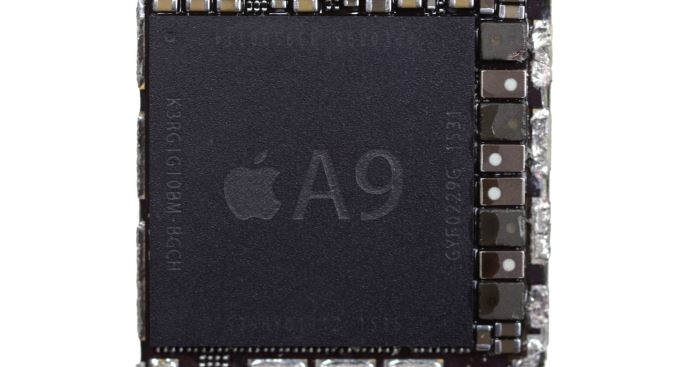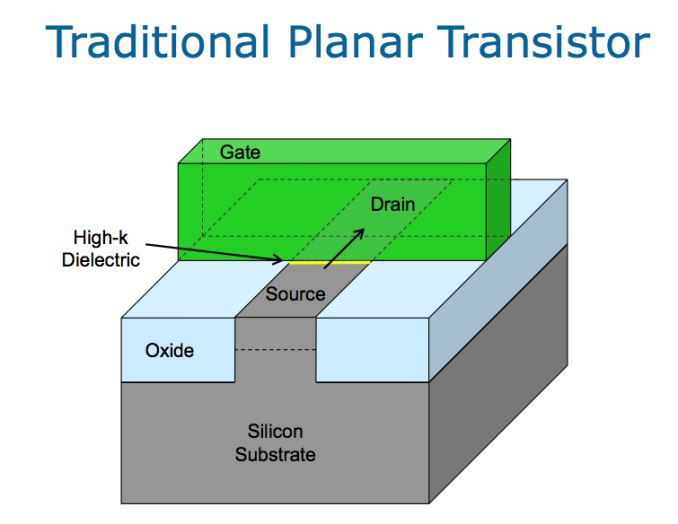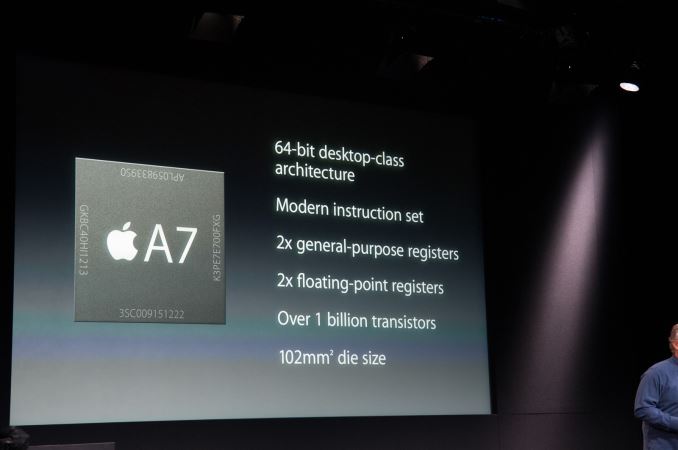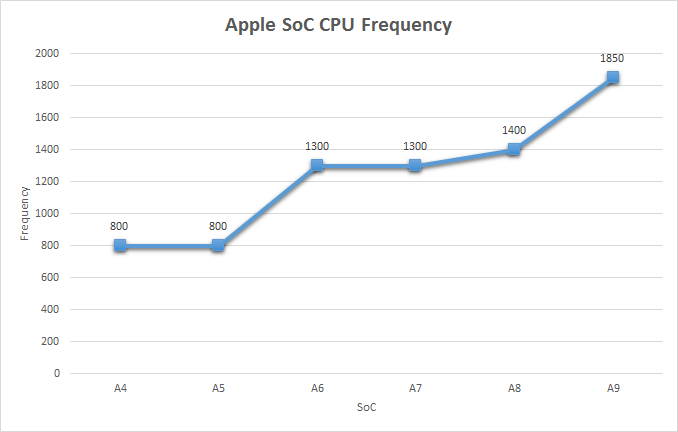The Apple iPhone 6s and iPhone 6s Plus Review
by Ryan Smith & Joshua Ho on November 2, 2015 8:00 AM EST- Posted in
- Smartphones
- Apple
- Mobile
- SoCs
- iPhone 6s
- iPhone 6s Plus
Analyzing Apple A9’s SoC
For Apple’s engineering teams, I’m still undecided whether Apple’s tick-tock style of SoC development is a curse or a blessing. That Apple more strongly invests in SoC development for the iPhone-S processors is a blessing, as it gives the engineering teams a bit of time to breathe and to plan out major architecture shifts over two years. On the other hand even for non-S iPhones the engineering teams still need to deliver an amazing product – iPhone 5 and iPhone 6 were no slouches – so I’m not sure how much of a breather the engineering teams actually get. They may have two years to space some of their transitions, but they must continue to deliver a top-tier SoC every year.
When Apple released the A7 SoC alongside the iPhone 5s in 2013, they pulled off something that rocked the SoC industry. The Cyclone CPU core all but came out of nowhere, beating previous estimates for the first ARMv8 64-bit phone SoCs (by any vendor) by roughly a year. As a result the 64-bit transition became a lot more important a lot sooner than anyone was expecting, and to this date some of Apple’s SoC competitors are still trying to recover from the shock of having to scramble to go 64-bit sooner than they planned.
As for Apple’s engineering teams, that we’re on another iPhone-S year means that there’s quite a bit of pressure to pull off a repeat performance, and I suspect that pressure is internal as much as it is external. A7 brought with it Cyclone, a CPU that was not only 64-bit, but thanks to its exceptional (for a mobile CPU) issue width of 6 micro-ops, brought with it a huge jump in single-threaded performance. At the same time A7 also saw Apple transition to PowerVR’s Rogue architecture GPUs (PowerVR G6xxx), which was a similar jump in GPU capabilities and performance, along with setting the stage for Apple’s proprietary, low-level Metal graphics API. A7 was everything Apple needed and more, cementing Apple’s place as a top-tier SoC designer and laying the groundwork for the performance advantage Apple has enjoyed over the past two years.

Apple's A9 SoC (Image Courtesy iFixit)
For 2015 then and for their latest iPhone-S, Apple has once again turned out a new SoC. This brings us to the A9, and in a year with an iPhone-S and almost no external design changes to speak of, all eyes are on what Apple has devised to go inside their phones.
| Apple A9 vs A8 SoCs | ||||
| Apple A9 (2015) | Apple A8 (2014) | |||
| Manufacturing Process | TSMC 16nm FinFET / Samsung 14nm FinFET |
TSMC 20nm HKMG | ||
| Die Size | 104.5mm2/96mm2 | 89mm2 | ||
| CPU | 2 x Apple Twister ARMv8 64-bit cores |
2 x Apple Typhoon ARMv8 64-bit cores |
||
| GPU | IMG PowerVR GT7600 | IMG PowerVR GX6450 | ||
Finally Fabbed with FinFETs
When the iPhone 6 launched I spent some time talking about how for the A8 SoC, Apple finally reached the point where they were building SoCs on a leading edge manufacturing process. That process at the time being TSMC’s 20nm planar process. The fact that Apple was building on a leading edge process was important for two reasons: 1) It was a strong indicator of how serious they were about SoC production and how much they were willing to spend in order to achieve the best possible performance, and 2) it meant that Apple had finally completely climbed the ladder (so to speak) and wouldn’t be able to “exceed the curve” just by catching up on manufacturing technology. Post-A8, Apple can only improve their performance by improving their architecture, building bigger chips, and finally, jumping to newer manufacturing processes as they become available.
What wasn’t said at the time – due to the fact that no one outside the fabs was quite sure – was where Apple would go in 2015. Had you asked me in 2014 what I would expect the A9 to be fabbed on, I would have suggested another round on TSMC’s 20nm process now that Apple had caught up to the leading edge. However much to my surprise (and to a steak dinner I lost a bet on) Samsung was able to get their 14nm FinFET process yielding well enough to supply Exynos 7420 in bulk for the Galaxy S6 launch nearly 6 months ago.
The fact that one of the contract fabs was able to get a FinFET process up and yielding well enough for volume production before the very end of 2015 has definitely changed the picture for what Apple can do. Once again they get to jump to a new manufacturing process for their next SoC, though this time by staying on the leading edge.


Planar vs. FinFET (3D) Transistors (via Intel)
While I’m not going to go into the physics of FinFET in depth here – we have some great articles on that already – I do want to quickly touch upon why this is so important. 14nm (and 16nm) FinFET isn’t just a new manufacturing node, but it’s part of a broader change in how transistors are manufactured. Simply put, FinFET (aka 3D transistors) are a long in development technology meant to help transistors scale to increasingly small scales, on the order of dozens of atoms or less.
FinFET transistors are necessary because as transistors get smaller their leakage (wasted power) goes up, and without FinFETs leakage would spiral out of control. In fact that’s exactly what happened on the 20nm nodes from Samsung and TSMC; both companies thought the leakage of planar transistors could be adequately controlled at 20nm, only for leakage to be a bigger problem than they expected. Due in large part to this reason, the 20nm SoCs released over the last 18 months have more often than not struggled with power consumption and heat, especially at higher clockspeeds. Apple is something of the exception here, with the 20nm A8 proving to be a solid SoC, thanks in part to their wide CPU design allowing them to achieve good performance without using high clockspeeds that would exacerbate the problem.
That said, while Apple managed to handle 20nm well enough, they were still ultimately at the mercy of a subpar process. The 14nm/16nm FinFET processes are what 20nm should have been all along, with the use of FinFETs drastically cutting down on leakage and reducing operating voltages – and now that FinFETs are here Apple no longer has to be as conservative as they were with A8. What that gives Apple then is a chance to push the envelope much harder on clockspeeds, taking their already wide CPU designs and turning up the clockspeeds as well.












531 Comments
View All Comments
IanHagen - Wednesday, November 4, 2015 - link
Would you be so kind and post some sort of source for the allegedly professional review that deemed the iPhone camera as really poor? I'll be waiting by the sea.hlovatt - Monday, November 2, 2015 - link
Fantastic review, particularly liked the deep dive on the CPU.It must be hard to ignore the nasty comments some people make because you don't like their favourite phone as much as some other brand. Rest assured that their are many more people who appreciate your efforts than those who seem to have way too much invested in their choice of phone.
FunBunny2 - Monday, November 2, 2015 - link
-- * Especially the SoCSo, yes or no (and show your work): the Apple Ax processors are modified ARM ref. devices simply by adding off-the-shelf functionality available to any engineer with an HDL/CAD/etc. workstation? Seems so from all the various descriptions, here and elsewhere.
extide - Monday, November 2, 2015 - link
No they are clean sheet implementations of the ARM v8 instruction set. No off the shelf ARM Cortex CPU is even remotely similar, they are all much narrower designs. This chip is honestly designed more like an Intel Core CPU than an ARM one. Too bad you can only get it in an iPhone :(Byte - Monday, November 2, 2015 - link
Im a hardcore MS hore and hate Apple. But their iPhones cannot be beat. Android STILL feels like Windows Mobile phone which I i've used years before smartphone was a thing, starting with Palms. I'm a bit disappointed with the new camera, but pictures still look better on an iPhone than S6 even with Samsungs far superior screens. Android only had a short uptick when iPhones were stuck in the low screen sizes, but now Apples stronghold is insane. It will only take a paradigm shift from actual phones to challenge that, which might be very soon.pliablemoosethebanned - Monday, November 2, 2015 - link
Ignore the idiots, great review guys.Caliko - Tuesday, November 3, 2015 - link
With Apple's track record,You have a better chance building a snowman in hell than get them to pay you for something.
Alexey291 - Tuesday, November 3, 2015 - link
So you're implying that they forfeit their marketing contracts? I'm just asking because you seem to be the resident apple expert hereBragabondio - Tuesday, November 3, 2015 - link
I guess, to avoid comments like the above you guys need to state in the summary if you are using Iphone, Android or s/g else as a daily driver.The idea is that all of us have our preferences and biases but sometimes when we like an ecosystem (or if we were more familiar with a particular ecosystem) we made decision on what is important to review based on personal preferences and biases. For example, I like a lot a CNET review of the new Apple TV where the author immediately stated he is an Android guy. So when at the end he gave it an overall score of 4 out of 5, people who are into Apple ecosystem are aware that the product was reviewed by somebody who may have different expectations about what a streamer/casual game machine should do compared to them.
I guess most of you guys from Anandtech are into Apple so it is difficult to find somebody who can provide an alternative angle but at least you can state where you are coming from.
The SoC of the new Iphones may be great but if I can paraphrase the Russian proverb it is not the SoC alone that makes the phone great.
jospoortvliet - Wednesday, November 4, 2015 - link
Well didn't the author write his daily phone is a HTC One M7? And compare the iPhone with it at some points? I have the One as well and he said the right things - looks like Apple has simply done a great job on almost every front.